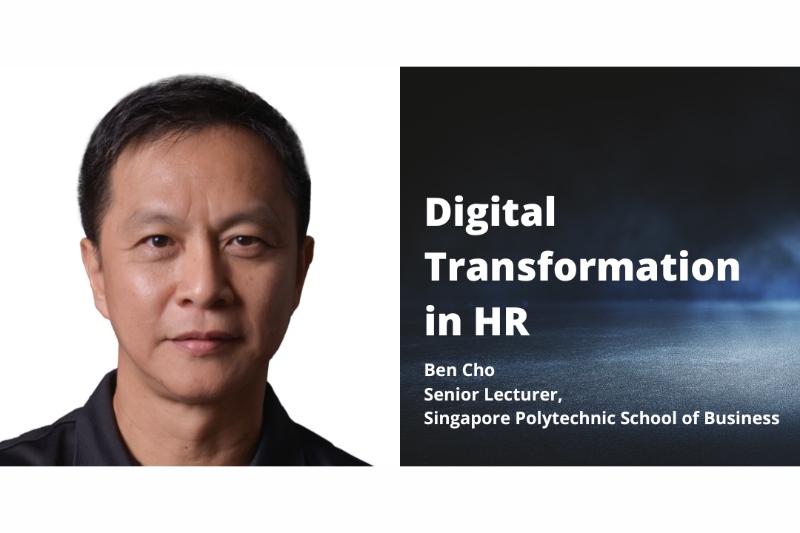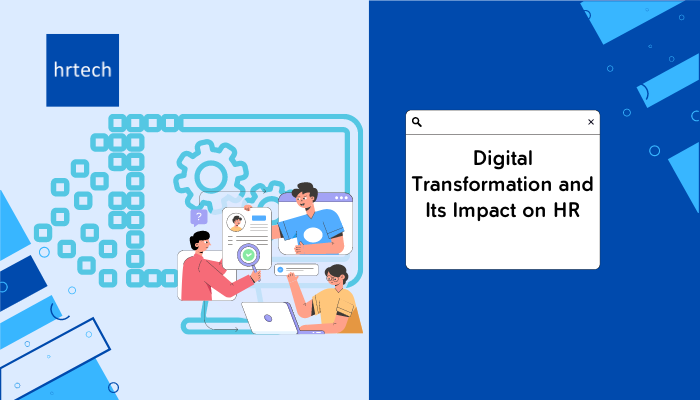Changing circumstances have pushed the timeline forward by a few years, and any business that does not earnestly begin their digital transformation will pay a heavy price.

Digital Transformation – what is it?
The COVID-19 pandemic has only made more urgent the need for businesses to transform digitally to remain competitive. Changing circumstances have pushed the timeline forward by a few years, and any business that does not earnestly begin its digital transformation will pay a heavy price.
Digital transformation focuses on adopting and adapting technology to allow businesses to explore new ways of creating and delivering value. This value is unlocked through reimagining customer relationships and achieving greater operational agility.
This article proposes to look at Digital Transformation as a strategy to integrate technology into all areas of a business resulting in fundamental changes in how businesses operate and how they deliver value to customers. We should think of digital transformation less as being all about technology, and more as the ability to maximize benefits and returns from technology. The success of this transformation really depends on employees’ capabilities and skills, without it the transformation process will be slowed and difficult. Businesses now have to acquire if not develop this next generation of skills in their employees.
Considerations for Digital Transformation
Digital transformation is about the interaction of a firm’s employees with the deployed technology to create and deliver extraordinary value to its customers. How can we start on this transformation? Some of the key considerations are:
- Firm’s culture and leadership
- Reskilling/upskilling of employees
- Employees’ interaction with technology
- Firm’s operation agility
- Customers’ experience
This article, which has a human resource management focus, will be looking at the first two considerations.
Firm’s culture and leadership
Although technology will play a vital role in driving digital transformation, employees must be equipped to adopt technology and adapt smoothly. Since there will be an emphasis on reskilling and upskilling employees, a rethink of the firm’s culture, values, and leadership is necessary. The following are some considerations of core values to reshape the firm’s culture:
1. Core leadership skills
The role of a leader cannot be understated in change management. Distributed leadership and self-managed teams are critical to achieve the agility needed to keep pace with the changes every business will experience. Such an organizational structure requires every employee to have leadership skills. These core leadership skills will help employees to:
- Understand the firm’s strategic intent,
- Prioritize daily activities to work towards the strategic intent
- Delegate tasks to team members to better utilize team members’ talents and capabilities.
- Manage performance and be accountable.
- Communicate effectively and efficiently to achieve alignment in the organization
2. Put employees first
Just as the firm is investing in new technologies, it should also invest in its people too. Any advancements in technology must be accompanied by the appropriate human skills, so reskilling and upskilling the workforce is just as important as materially investing in a particular technology. This becomes not a one-off investment, but a culture that recognizes it is important to put employees first in this age of digital transformation. In doing so, employees will feel empowered by their readiness and engage with the technology more confidently.
3. Focus on soft skills
Some soft skills for example – communication, leadership, teamwork, problem-solving, creative thinking, critical thinking, emotional intelligence, flexibility and adaptability, productivity and accountability, etc. are important to how employees collaborate, lead and function effectively in the workplace. The need for operation agility in a very volatile and challenging environment has greatly elevated the importance of these soft skills. Businesses now have to focus more of their developmental efforts on ensuring their employees develop their soft skills further.
4. Harness data analytics for decision making
Instead of chasing after the latest technologies, a business should focus on harnessing valuable data to gain new insights. These insights will provide a glimpse to the future and help businesses formulates their strategies and gain competitive advantages.
5. Innovate and learn from mistakes
Mistakes are good if teams can learn from them as they will contribute to the experience of continuous learning and innovation. Businesses should not see mistakes as opportunities lost but lessons learned. Innovation comes with unavoidable risks, but businesses can and should learn how to better manage these risks so as to minimize fallout.
Reskilling/upskilling of employees
There are many skills and attitudes that employees would need to have to help businesses to transform digitally. Businesses need a highly skilled and digitally savvy workforce to gain digital maturity in the organization. The following are some skills a business may want to consider in its employees:
1. Agile mindset and digital dexterity
An agile mindset helps to easily overcome obstacles and not get stuck when unexpected events happen. This is the direct opposite of a fixed mindset that is adverse to failure and uncertainties. And someone with a fixed mindset will try to reduce failure and uncertainties through extensive planning and taking the well-trodden path.
By possessing an agile mindset, employees can reach a higher level of digital dexterity and will likely succeed in digital transformation. Digital dexterity is the ability to leverage technologies to deliver faster and more valuable outcomes from digital initiatives even in very uncertain circumstances.
2. Cybersecurity
Cyber security is about knowing how to and actively protecting a business’ digital assets. With our world being so digitally connected, cyber assets need to be effectively guarded to protect from theft, hacking, and data leaks. Every employee must therefore understand and appreciate the importance of strong cybersecurity.
3. Data-driven mindset
It is a mindset that directs employees to see value in the information data analytics provide. Some still consider data to be the domain of the IT department and the data scientists/analysts. However, data is an asset that can be analyzed to gain insights into the challenges a business is currently facing. Employees should acquire data literacy which is the ability to read data and use it to make better business decisions. If it is not already doing so, businesses should actively invest in data literacy training to cultivate in their employees a data-driven mindset.
4. New media literacy
New media literacy refers to the ability to curate, create, and connect with others in the digital network environment. In the time of the pandemic, we are unable to travel to meet collaborators and colleagues in person, a sign of a commitment and sincerity to the business relationship. Now, we are forced to make do with digital means, such as Zoom, Microsoft Teams, and Google Meet. Even once travel restrictions are limited, we must continue to make an effort to connect with others digitally. Customer relationship management has been further expanded with social media platforms like Twitter, Instagram, TikTok, Facebook etcetera, and employees now need to learn how to leverage such platforms to promote brand awareness. Hence employees must possess new media literacy to do their job effectively.
5. Lifelong learning
The ever-evolving and changing digital space demands that employees stay abreast of the latest technologies. Having a zeal to learn, adapt and grow will make a treasured employee. Businesses need to learn to facilitate and encourage lifelong learning. This can be done by allowing employees to self-direct their learning, make learning goals as important as performance goals, create opportunities for social learning e.g. learning circles, and recognize learning as an achievement.
6. Computational thinking
Computational thinking training helps build employees’ resilience. Employees will learn confidence in dealing with complexity, persistence in working with difficult problems, tolerance of ambiguity, the ability to deal with open-ended problems, and the ability to communicate and work with others to achieve a common goal. An employee who has computational thinking will be able to take a complex problem, break it down into a series of smaller, more manageable problems which can be looked at individually. By focusing on solving these smaller problems, solutions can be more easily designed, and the ultimate complex problem more efficiently resolved.
HR and Digital Transformation
Despite its name, digital transformation is about the people that make it happen. Digital transformation is about helping employees to make better decisions and to take quicker actions, to be agile using technology so to speak. Consequently, the role of HR becomes critical in ensuring the employees receive the right training and that their professional development is aligned with the business strategies and intent.
Traditionally, HR is thought of as a cost centre, a supporting function, and usually heavy on administrative tasks. To achieve digital maturity in the business, HR needs to level up and be involved in workforce transformation. Perhaps, HR can start by helping employees understand and support digital initiatives. HR is responsible for the right talent mix and where necessary, help employees grow. HR must understand the culture and help pave the way for change and set expectations on what these changes entail. Creating value that was not done before certainly means adopting a different and better action plan from before. Employees must become accustomed to change, and HR should take necessary measures to create such a culture that is open to growth.
HR is well-placed to help every employee understand and support the firm’s digital transformation, by guiding them and showing how digital transformation will benefit their work and their own careers.
HR Tech and HR’s very own journey in Digital Transformation
HR can certainly lead the way in digital transformation. There are some key technologies and specifically HR technologies (HRTech) which HR can leverage to bring about digital transformation in HR functions. HR needs to move from traditional, manual HR processes to digital, automated ones. From hiring to training and managing, there are HRTech tools that HR can employ. And these are:
- HR hiring software uses artificial intelligence to screen and shortlist candidates.
- Cloud-based human capital management software that is secured and easily accessible.
By leveraging on HRTech, a business can expect to:
- Improve candidate’s experience and employer branding
- Improve employee onboarding
- Increase employee engagement
- Optimize employee training
And all of the above are critical in the business’s digital transformation. With HR leading in digital transformation, HR can certainly help bring about greater awareness and appreciation of digital transformation.
About the author:

Ben Cho has been part of the teaching staff at Singapore Polytechnic School of Business for 19 years. At work, he thoroughly enjoys interaction with his students and the challenges of mastering new technologies in his course of work. In his free time, Ben enjoys a good squash game and wildlife and sports photography. LinkedIn





